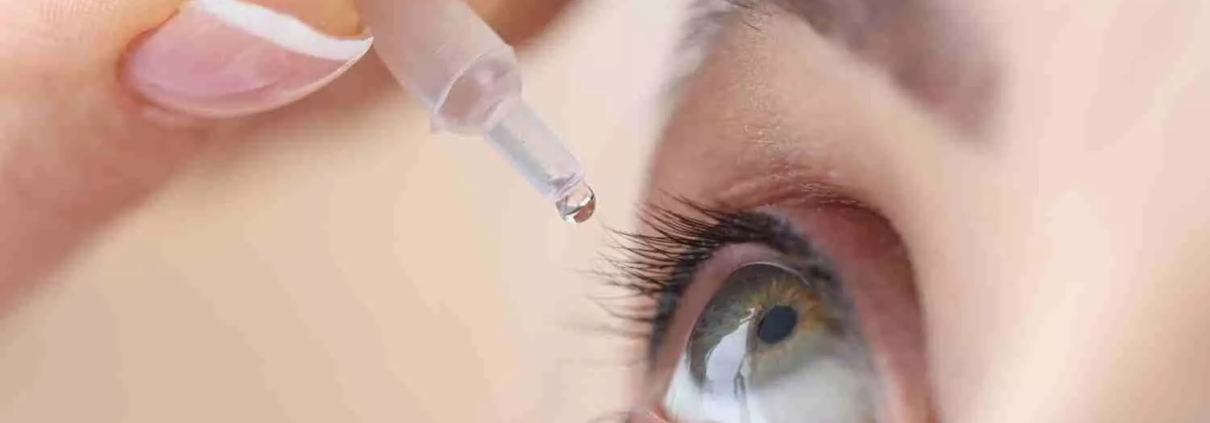Perfluorohexyloctane Eyedrops safe for contact lens wearers and may reduce contact lens dropout: Study

Dry eye disease (DED) is one of the most common disorders.
The incidence of DED has been increasing over the past several years. There are
two major subgroups of DED, aqueous-deficient DED, which results from reduced
lacrimal gland secretions, and evaporative DED, which results from excessive
evaporation of the tear film. The majority of DED cases have an underlying
evaporative component, and the primary cause of evaporative DED is meibomian
gland dysfunction (MGD). MGD causes alterations in the tear film lipid layer
which contributes to tear film instability and increased evaporation of the
aqueous layer. Tear film instability associated with MGD leads to tear
hyperosmolarity, resulting in apoptosis and inflammation of the ocular surface.
Patients suffering from DED complain of symptoms including
irritation, dryness, burning or stinging and visual disturbances. These
symptoms may adversely affect the patient’s quality of life and work
productivity. Signs of DED include tear film instability (eg, reduced tear film
breakup time (TBUT)), and conjunctival redness. Many therapies are being used
to help treat MGD, including physical therapies (eg, gland expression, thermal
pulsation, intense pulsed light), oral medications (eg, doxycycline,
azithromycin) with the intention of reducing inflammation or lowering meibum
viscosity, and over the counter lipid based tears to replenish the tear film
lipid layer temporarily. Immunomodulatory or anti-inflammatory drugs such as
cyclosporine, lifitegrast, and loteprednol etabonate are also being used for the
treatment of DED but are not approved for the treatment of MGD.
According to the TFOS DEWS II Iatrogenic Report, contact
lenses can significantly impact dry eye syndrome (DES). The mechanical
interaction between the lens and the ocular surface can disrupt the tear film,
leading to increased evaporation and instability. Contact lens wear can also
reduce corneal sensitivity and alter tear production. Long-term use of contact
lenses is associated with meibomian gland dysfunction, further contributing to
DES symptoms. Specifically, contact lens-induced dry eye (CLIDE) and contact
lens-associated dry eye (CLADE) are recognized conditions where lens wear
exacerbates dry eye symptoms.
Perfluorohexyloctane (PFHO) ophthalmic solution (MIEBO®)
(Bausch + Lomb) is a novel, non-aqueous, single entity, preservative-free
ophthalmic drop recently approved by the FDA for treatment of the signs and
symptoms of dry eye disease. This sterile, clear, colorless liquid containing
100% perfluorohexyloctane is approved for topical ophthalmic use four times
daily. Although its exact mechanism in DED is unknown, PFHO is effective in
reducing tear film evaporation by forming a monolayer at the tear film’s
air–liquid interface. Its low surface tension facilitates rapid spreading across
the tear film, causing minimal visual disturbance due to its refractive index
similar to water.
Both Phase 3 trials (GOBI and MOJAVE) demonstrated
significant improvements in both signs and symptoms of DED compared to
hypotonic saline, with good tolerability. In addition, 100% of the patients
enrolled in both trials also had clinically diagnosed meibomian gland dysfunction.
While the safety and efficacy of PFHO has been demonstrated in non-contact lens
wearers, its safety and potential benefits in habitual contact lens wearers
have not been explored. This report presented the results of a trial designed
to evaluate the safety of PFHO and its effect on contact lens comfort,
specifically in established contact lens wearers.
While the safety and efficacy of PFHO has been demonstrated
in non-contact lens wearers, its safety and potential benefits in habitual
contact lens wearers have not been explored. This report presents the results
of a trial designed to evaluate the safety of PFHO and its effect on contact lens
comfort, specifically in established contact lens wearers.
The study included 47 patients who were adjusted contact
lens wearers with a best corrected visual acuity of 20/25 or better at
distance. All the patients were healthy contact lens wearers with no dry eye
symptoms. A significant improvement in comfort scoring was observed without any
significant changes in osmolarity, meibography scores, and total fluorescein
staining.
PFHO, administered 4 times daily for 4 weeks in patients
wearing soft contact lenses, has shown to be safe and well tolerated when used
as directed by the manufacturer. These findings are noteworthy, given that
demonstration of safe use of PFHO in soft contact lens wearers has not been
evaluated from other studies. PFHO also demonstrated a significant improvement
in contact lens comfort. These results are even more interesting given that
these patients were not dry eye patients. There were no serious ocular or
nonocular AEs reported in patients treated with PFHO in this study. Limitations
of the current study include the relatively short treatment period of 4 weeks
and not exclusively evaluating contact lens wearers with dry eye disease.
Further research is needed to explore the mechanisms driving changes in comfort
and their relation to tear film stability. A future study where patients do not
remove their contact lenses when instilling PFHO could also be considered.
The conclusion in this study is that PFHO is a safe product
to utilize for soft contact lens wearers when used as directed by the
manufacturer. The study demonstrated no statistically significant adverse
changes to the ocular surface while showing statistically significant
improvement in comfort.
Source: Geffen and Pennell; Clinical Ophthalmology 2024:18
https://doi.org/10.2147/OPTH.S487897



